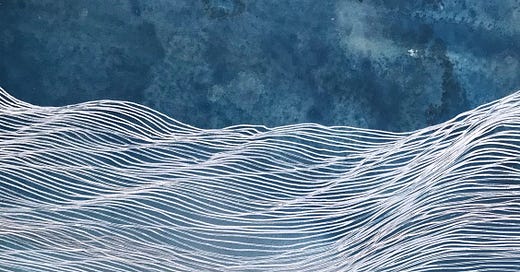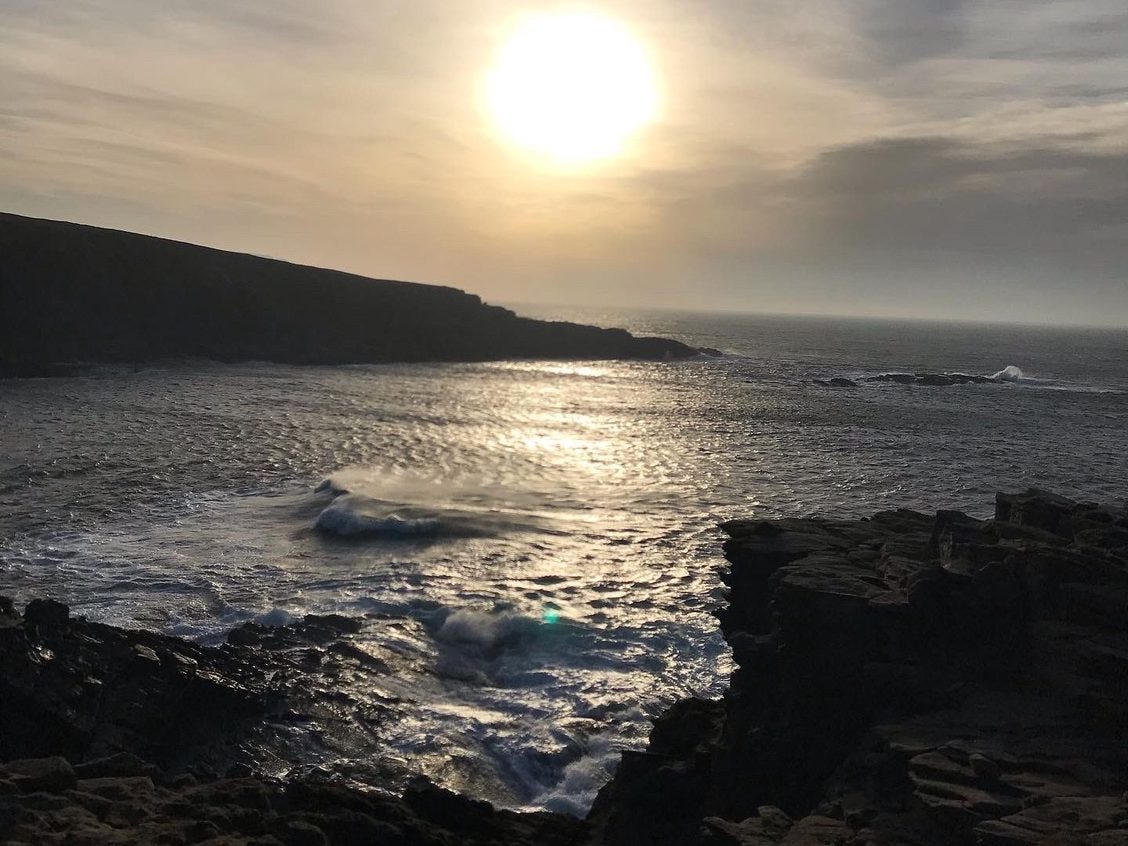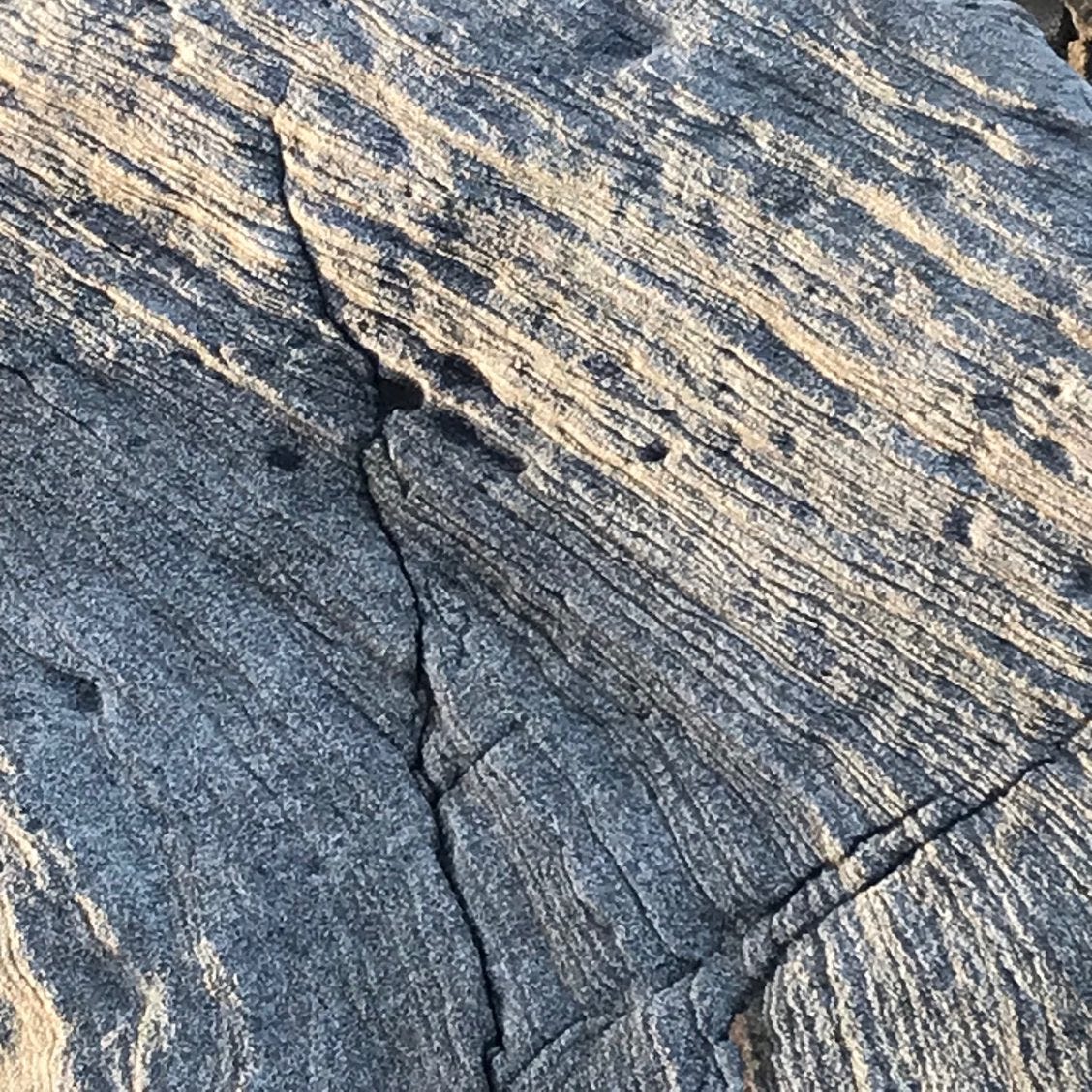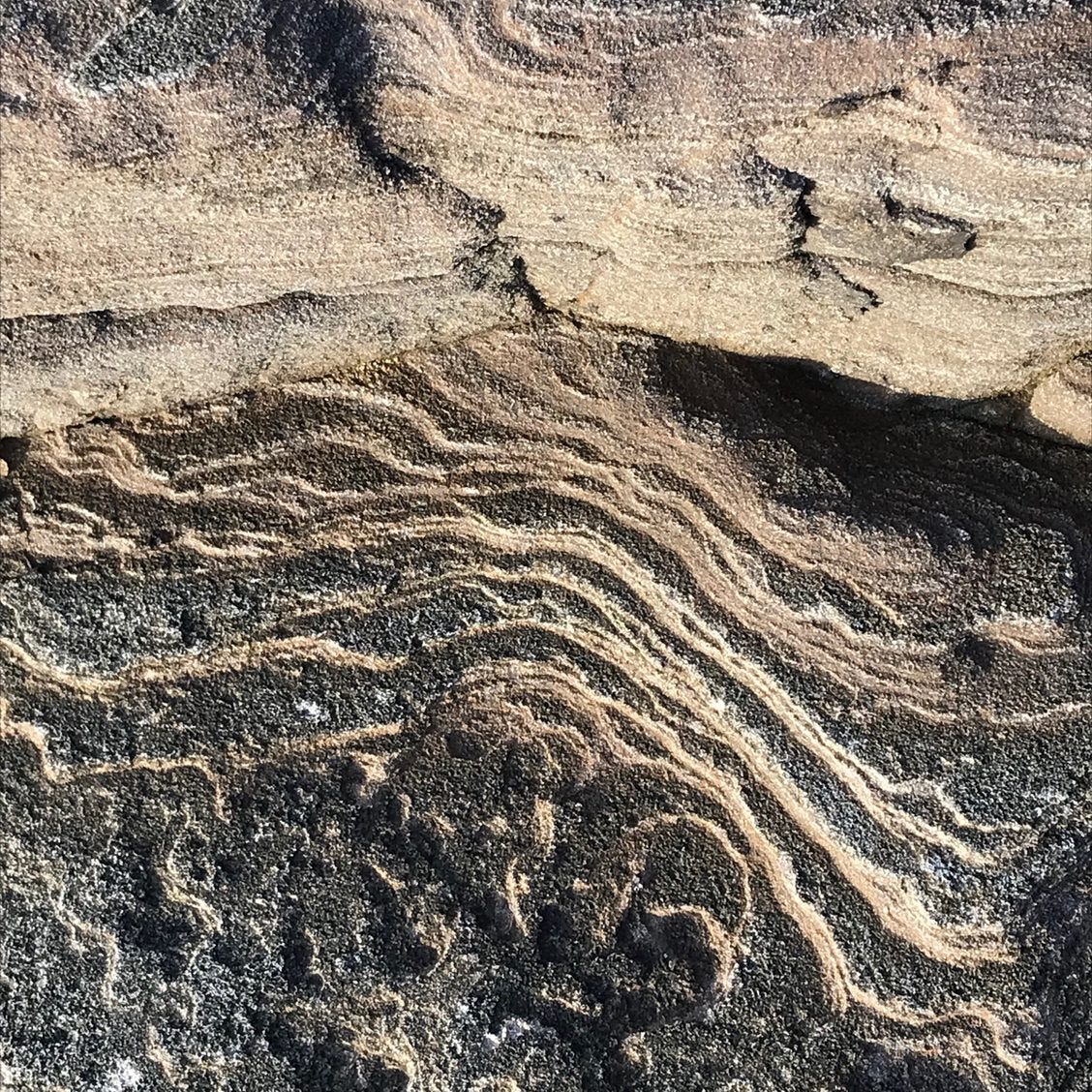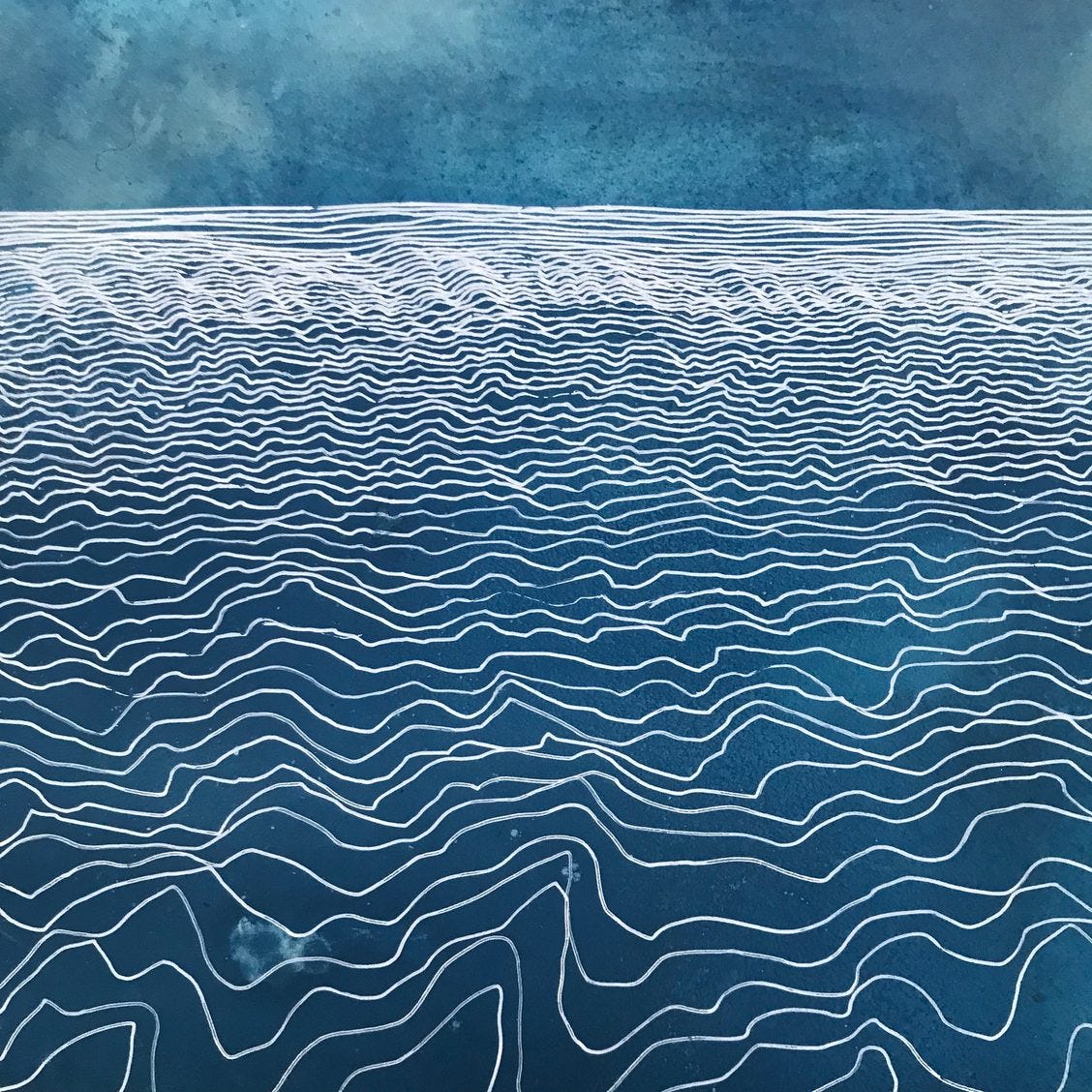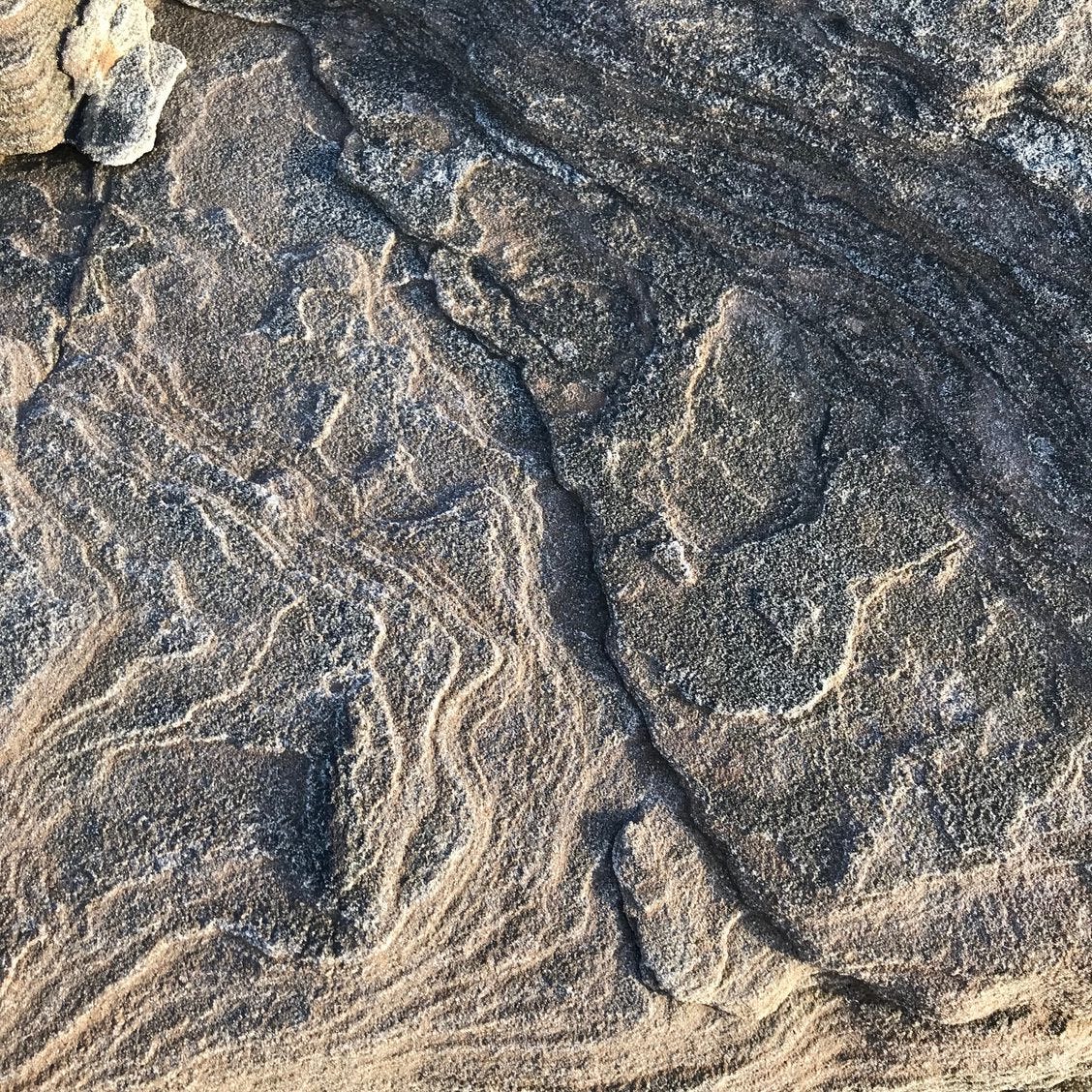On the pleasures of looking
It’s blowing a stiff South-Eastherly today and there’s a big gale with heavy rain on its way to us tomorrow, so it’s all a bit grey and dark. But yesterday was one of those lustrous soft days we sometimes get here in Orkney in winter, when the low-angled light makes everything luminous. So I am really glad I got out for a walk along the clifftops at Yesnaby, here in West Mainland, with two lovely artist pals yesterday afternoon.
I love going for walks with other artists. They don’t mind spending ages peering at rock formations, or the way the light happens to fall across a puddle. They draw your attention to things you overlooked; a crust of lichen on an eroded fencepost, the particular texture of a water-worn footpath, the colours of the clays revealed by recent rainfall, the gills of a freshly-picked mushroom. It’s not about the walking so much as it’s about sharing the experience and pleasures of looking, and it’s balm for the soul.
There’s always something to look at when you walk the clifftop path at Yesnaby. Yesterday the low, raking light was picking out sharply the fine sedimentary layers in the rocks, revealed by the scouring of the salt-laden winds that flay this coastline. Everywhere I looked I was seeing the fine, repeated lines I’ve been drawing in the studio this last few weeks.
It’s something I’ve noticed a lot, that whatever is preoccupying me in my creative work seems to keep reappearing everywhere I look in all sorts of unexpected places, like an echo or resonance. I’m not entirely sure if I end up drawing what I see, or I end up seeing what I’m drawing.
It’s a phenomenon known as the Baader-Meinhof Effect, also known by cognitive scientists as the Frequency Illusion. It’s the uncanny sense that something you’ve been thinking about all of a sudden seems much more frequent in your environment than it was before. What’s interesting about it is that it tells us a lot about how we pay selective attention to our environment. What we are holding in mind influences where our attention goes and what we see.
Our attention is always a dance between the things we are intentionally focussing on or looking for, the things that involuntarily grab our attention, and the many things that we completely fail to notice at all. Our perception is full of holes and blind spots but also those moments when something in the world seems to actively reach out toward us waving ‘look at me!’
Considered this way, looking is more like engaging in a dialogue with the world than passively letting a scene play itself out on our retinas. As the film-maker Mark Cousins shows in his beautiful cinematic meditation The Story of Looking, the art of looking is something we need to cultivate and savour. Looking is one of the great pleasures of life. You can view his documentary online here. It’s well worth your time.
My recent work has been guided by a preoccupation with looking at water and observing its endless dance with light, so this eruption of solid rock seems like a tangent, a superficial likeness. But of course it’s not really a tangent. Because these fine layers of sediment were laid down by the action of water 400 Million years ago when Orkney lay at the bottom of a shallow tropical sea. Waves, tides, and in some places even raindrops from the Devonian are recorded in the surfaces of these salt-blasted rocks.
These rocks are a reminder that water may be liquid and mutable, but it’s also the most powerful shaping force of this planet. They are also a reminder that even solid rock is always changing, eroding and slipping back into the sea.
May you savour the joy of looking this week,
Sam


